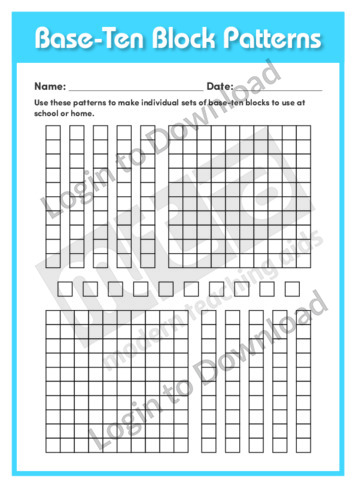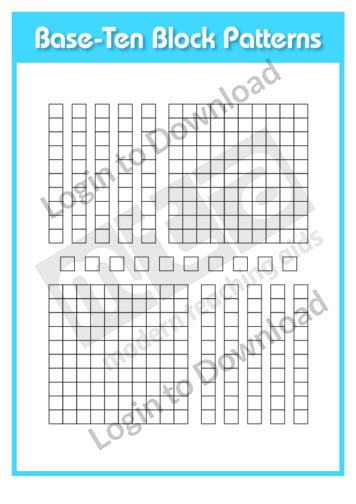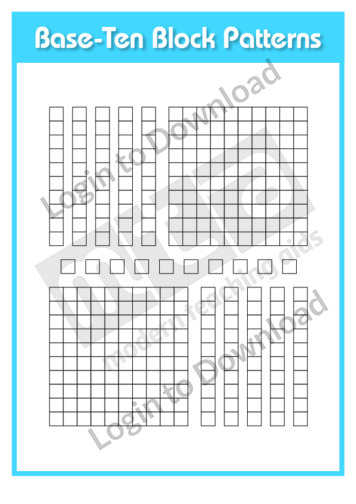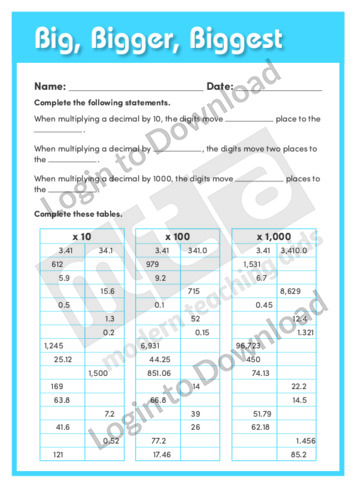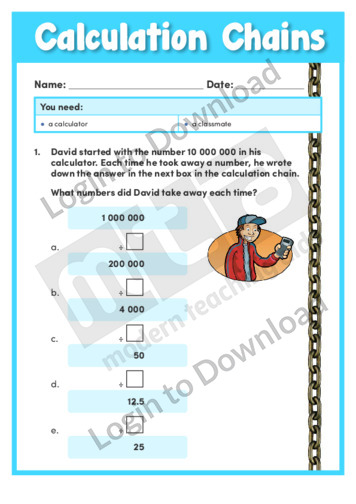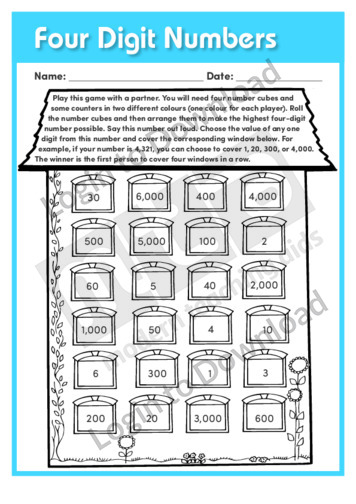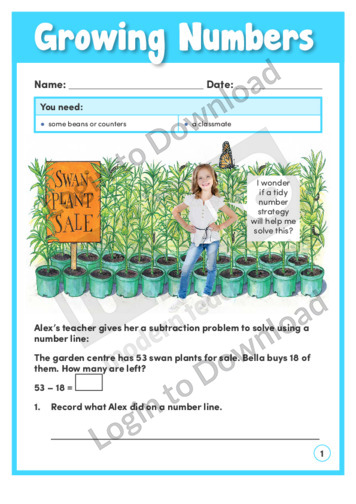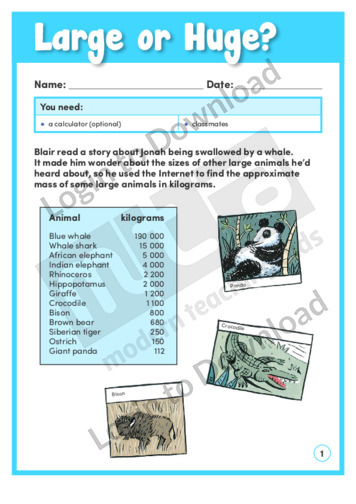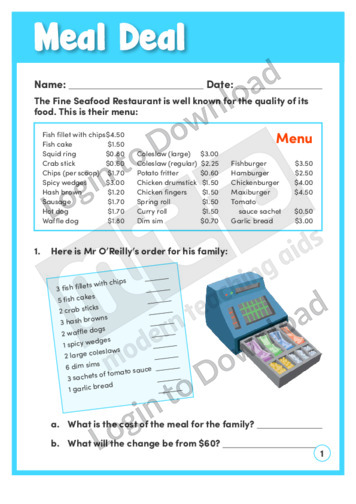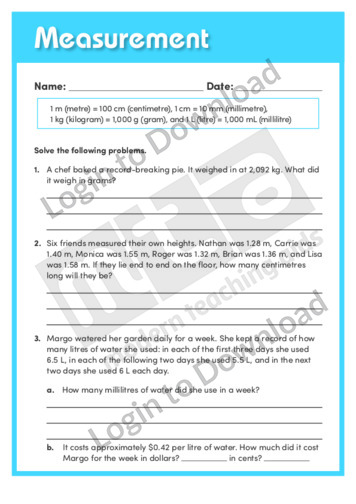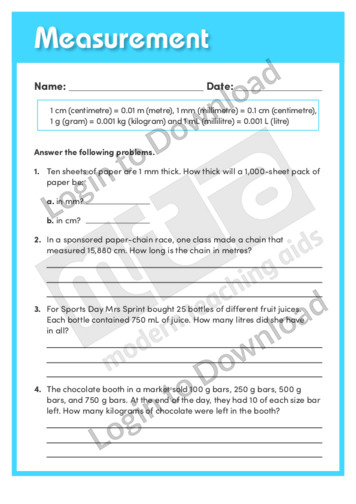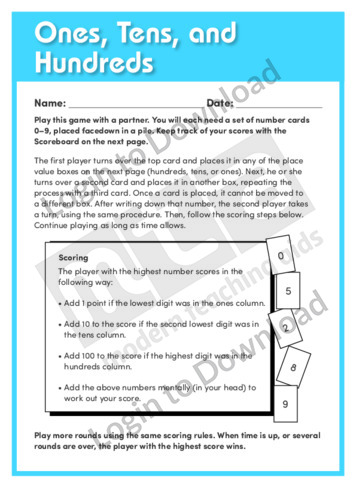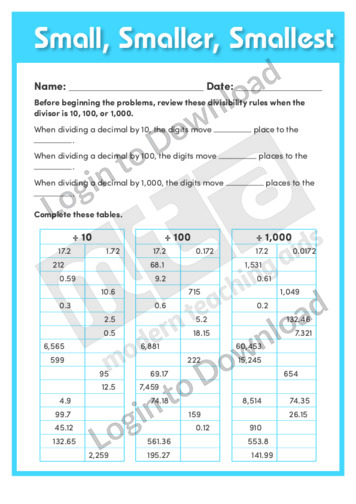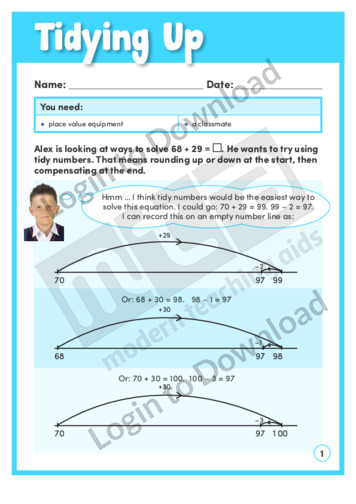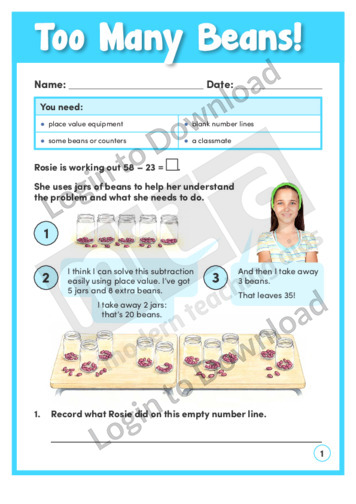This place value template, ‘Base-Ten Block Patterns’ can be reproduced for classroom use.
This place value template, ‘Base-Ten Block Patterns 1’ can be reproduced for classroom use.
This place value template, ‘Base-Ten Block Patterns 2’ can be reproduced for classroom use.
This multiplication and decimals worksheet, ‘Big, Bigger, Biggest’ asks students to practise multiplying decimals by 10, 100 and 1000.
This place value learning activity, ‘Four Digit Numbers’ asks students to practise with place value.
In the learning activity ‘Growing Numbers’, students use and compare strategies as they solve word problems that involve addition and subtraction. They are encouraged to compare and share the strategies they use with a classmate as they develop an understanding of the relative benefits of different strategies. An answer sheet is provided and includes accompanying …More
Did you know that a whale shark has three times the mass of an African elephant? The learning activity, ‘Large or Huge?’ features more interesting animal facts, and asks students to use fractions as they compare their masses. This activity includes comprehensive teaching notes to be read before beginning the activity with students, as they …More
In the menu-based activity, ‘Meal Deal’ students use their mathematical knowledge to help a family work out how much their seafood meal will cost. The items on the menu included fillets of fish, hot dogs, squid rings, and dim sum: some items may not be familiar, so students can create their own fast food menu …More
This multiplication worksheet, ‘Measurement 1’ asks students to practise in multiplication.
This division worksheet, ‘Measurement 2’ asks students to practise in division.
This place value learning activity, ‘Ones, Tens and Hundreds’ asks students to practise with place value.
The illustration on the learning activity, ‘Scaling Up’ shows families of fish that are made up of different numbers of square tiles. Students need to calculate the number of squares each family member is made of, then use strategies to count all the fish in the village. Three sizes of fish represent a family, and …More
The learning activity, ‘Sea Shelters’ shows a variety of sea creatures and some of the places they might live. By using the equations on each creature and the sums on the various homes, students find out where each creature lives. Students can use different methods to find the right places, apart from carrying out each …More
This decimals and division worksheet, ‘Small, Smaller, Smallest’ asks students to practise decimals and division.
In the learning activity ‘Tidying Up’, students use tidy numbers and other strategies as they compare ways to carry out efficient additions and subtractions. The learning activity supports an understanding of when and how the tidy numbers strategy of rounding up or down then compensating can help them to solve equations. An answer sheet is …More
In the learning activity ‘Too Many Beans!’ students use mental or concrete processes to try out different addition and subtraction strategies. They are encouraged to compare and share the strategies they use with a classmate as they develop an understanding of the relative benefits of different strategies. An answer sheet is provided and includes accompanying …More
What’s Best?’ is a learning activity and learning activity that asks students to consider more than one way of solving number problems. Students compare the strategies they use, explaining why some strategies work better than others, depending on the numbers involved. An answer sheet is provided and includes accompanying teaching notes with suggestions for supporting …More
It�s that easy!

